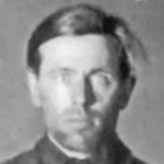
Philipp Petrovich Tyurin
Summary
Name:
Philipp Petrovich TyurinNickname:
The Leningrad Maniac / The Hellraiser / Philipp the BloodyYears Active:
1945 - 1946Status:
ExecutedClass:
Serial KillerVictims:
14+Method:
Stabbing / BludgeoningNationality:
Soviet Union
Philipp Petrovich Tyurin
Summary: Serial Killer
Name:
Philipp Petrovich TyurinNickname:
The Leningrad Maniac / The Hellraiser / Philipp the BloodyStatus:
ExecutedVictims:
14+Method:
Stabbing / BludgeoningNationality:
Soviet UnionYears Active:
1945 - 1946bio
Philipp Petrovich Tyurin was born in 1910 in Sumerki, Ryazan Governorate, Russian Empire. He served in World War II and was wounded, after which he settled in Leningrad (now Saint Petersburg) for medical treatment. In April 1945, he began working in the canteen of the Bolshevik plant and was provided with accommodation.
murder story
Tyurin’s killing spree began shortly after he settled in Leningrad. His first known murder took place in April 1945. According to both his own confession and the police investigation, he developed a pattern of targeting people in local marketplaces, specifically the Baptist Market and Smolensk Market. He would look for individuals carrying large sums of money or valuable goods, many of whom were involved in the black market trade or post-war bartering.
Tyurin would pose as a helpful worker offering to sell potatoes at a reduced price. He would lure victims back to his hut, under the pretense that they could collect the potatoes from his cellar. As soon as the victim began descending the cellar steps, Tyurin would strike them on the back of the head with a heavy object, killing them instantly.
Though Tyurin later claimed he murdered 29 people, Soviet investigators were only able to recover 13 bodies, with a 14th believed to be buried beneath a railway line, making excavation impossible. Tyurin claimed that at least nine more victims were thrown into the Utkina Zavod, a nearby water body with a thick silty bottom that hampered recovery efforts, even with the help of divers.
There was skepticism around his claim that the murders took place inside the hut. Forensic analysis at the time found no traces of human blood, suggesting that he may have murdered his victims elsewhere and only used the hut for storage or undressing their corpses.
By December 1946, local authorities discovered two bodies buried near Tyurin’s hut, triggering a larger investigation. Traces of animal blood were also discovered in his room, though this did not deter investigators from pursuing him further. Tyurin had fled the city to return to his native Ryazan Oblast, where neighbors noted that he carried with him 11 suitcases, a suspicious amount of luggage for a returning war veteran.
On January 27, 1947, Tyurin returned to Leningrad and was immediately arrested. At first, he refused to speak, but under interrogation, he confessed to 29 murders. His confessions were partially corroborated when more bodies were uncovered at or near his former residence.
By May 4, 1947, Tyurin was formally charged and his case went to court. The trial was swift, and he was sentenced to death by firing squad. His execution was carried out later that year.